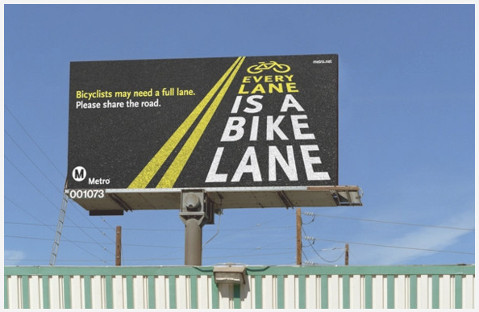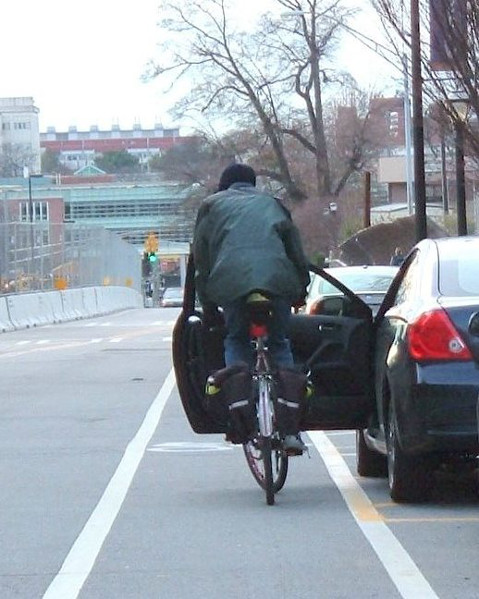Every Lane Is a Bike Lane
State Law Allows It for Safety

Like many cyclists, York Shingle sometimes “takes the lane” when he’s out on his bike. Pedaling down the middle of a traffic lane can elicit harsh stares, choice words, and occasional honking from drivers.
“I can tell sometimes cars behind me might get antsy,” says the Santa Barbara resident. “They might change lanes and speed up a lot as they pass.”

These drivers might wonder why a single bicycle is hogging an entire lane of traffic. They may not be aware that in many situations, taking the lane is the safest option.
It’s something Shingle has learned from experience. Biking home from the market earlier this year, he was coasting between a lane of stopped traffic on his left and parked cars on his right. As he slowed down to navigate the narrow gap, he was doored by a parked car.
“Right at the last second a guy opened his door … it jerked my handlebars to the side, turning my wheel sideways. I hit one of the cars waiting for the light to change, dented their wheel well, and then hit the ground with my face. I was bleeding everywhere.”
In addition to his facial injuries and abrasions, Shingle’s finger was fractured, requiring two months of physical therapy to rebuild strength so that he could return to his job as a woodworker.

The collision could have been avoided if the driver had checked his mirror before opening his door. But, Shingle doesn’t harbor any ill feelings, “He was very apologetic, and I don’t have any anger toward him. He was doing the best he could to make it right.”
For his part, Shingle says he now takes the lane whenever it presents the safest option. “Cars can go around me. But I’m not getting anywhere near car-door-opening range.”
Doors are not the only hazard at the right side of the road. Debris, construction, and parked cars can also impede travel. Moving around the objects while hugging the far side of the lane may result in drivers attempting to squeeze by, putting everyone at risk. Moving to the middle of the lane reduces the risks, makes cyclists more visible, and is legal in all 50 states.
While it can feel inconvenient for motorists to slow down and wait, it may help to know that in most cases, the cyclist is only attempting to travel a short distance where there is a gap in an otherwise safe biking route.
In Santa Barbara, where many of our bike routes are still awaiting completion, cyclists may unexpectedly find themselves without room to ride. De la Vina is a prime example. Its ample bike lane branches off from upper State, traveling past a row of shops toward downtown. But, a few blocks later the street converts to one way and the bike lane abruptly disappears, leaving cyclists to fend for themselves.
Some states are beginning to change the language on their signs to help educate road users. Studies have shown that changing the wording from the utopian but vague “Share the Road” to the more explicit “Bicycles may use full lane” results in bicycles moving into a safer position in the lane, and motorists providing more space as they pass. Los Angeles Metro made the message even clearer by posting, “Every Lane Is a Bike Lane,” ads throughout the city.
I’ve yet to meet a cyclist who loves riding in traffic. But, until our transportation infrastructure improves, some compromises will have to be made.
Once Shingle’s hand healed and his bike was repaired, he got back on the road. “That first ride was anxious, but for the most part biking is fine and comfortable now, except when I’m between cars.”
It’s a position we would all like to avoid.
How to Safely Take the Lane as a Cyclist
—Signal your intention.
—Wait until it is safe to enter the lane.
—Ride in the middle of the lane (so motorists don’t try to squeeze by you).
How to Safely Pass a Bicycle
—Wait until there is enough room
—Give bikes at least three feet of space as you pass. It’s safer, and it’s the law.
—Extend the same patience and courtesy you give to slower moving buses, garbage trucks, and postal vans.



